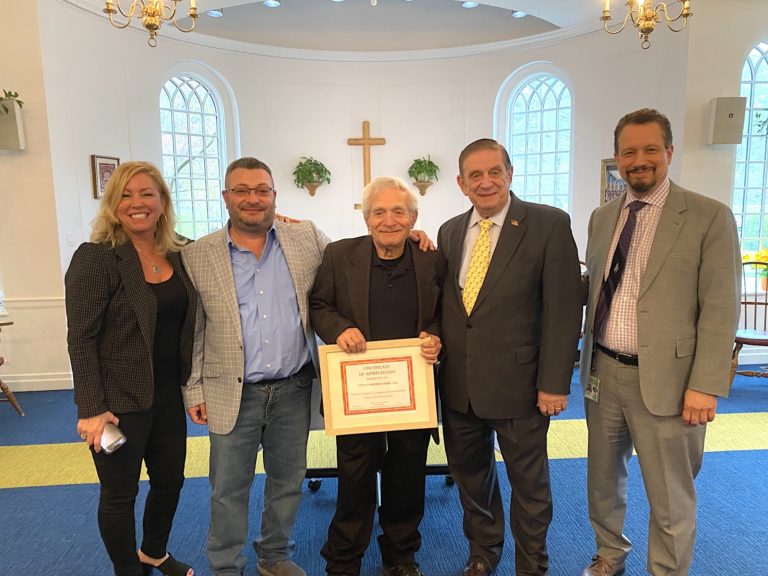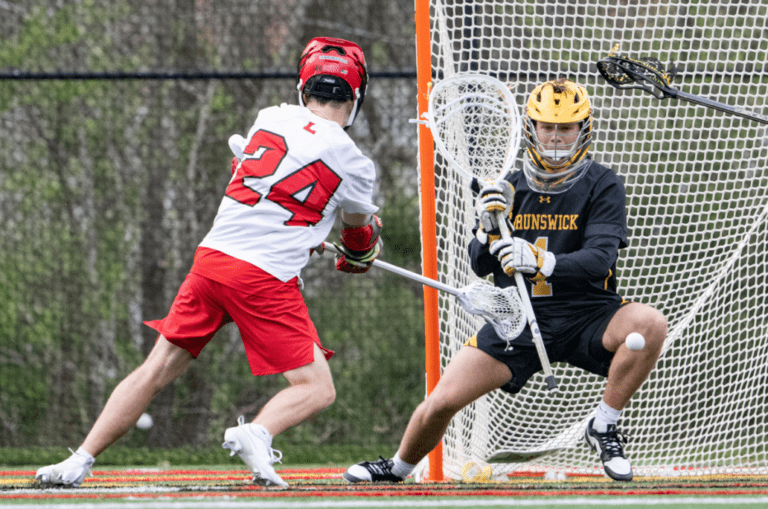
By Anne W. Semmes
Sentinel Features Reporter

Mary Staples-Webber has intense blue eyes, an up-front friendly manner, and a turn of phrase that hints at her Midwestern roots. A resident of the Old Greenwich seashore, she’s just returned from her hometown of Jessup, Iowa where she and husband David have a getaway home, where they got snowed out of experiencing the Iowa caucus. But she knows her hometown well. “There’s not a Democrat amongst them,” and yes, “I’m a Republican,” she says, “It’s stamped on my back.”
Mary has put an impressive stamp on her adopted Greenwich hometown and environs in the 40 or more years she has lived here. The Bruce Museum would not be where it so grandly is today without Mary’s gift at fundraising – she founded the Renaissance Ball – the Museum’s major fundraiser – now 29 years running. So too is Norwalk Community College grateful for her having co-founded their Le Bal D’Ecole fundraiser that annually brings more scholarships to needy students.
To safeguard the privately owned street she lives on, Tod’s Driftway, in the wake of forced public access of Greenwich Point (made available to the Town via an easement grant) Mary raised the necessary $200,000 for a lawyer to win their rights in court to keep that road private as an entity owned by the Lucas Point Association.
There’s no question that Mary Staples-Webber excels as a fundraiser. One friend describes her approach: “She’ll confront them with, ‘Take out your checkbook and give me $10,000.”
So, how did Mary come by these skills? Mary is quick to say, “I’m a survivor,” but that’s tip-of-the-iceberg talk. Mary was blazing trails in the Corn Belt before she reached her teens. Mary was entrepreneuring before the word had cache in the work world.
Picture Mary age 11 living on her father’s farm outside Jessup, looking at the likes of
“Seventeen” magazine desiring pretty dresses. It was time to get a job. “When I was a kid that’s how you made money,” she says. Detasseling hybrid corn was the teen summer job in those days, “But you had to be 13, so I lied,” Mary confesses. So for three weeks from dawn to dusk Mary on her tiptoes would detassel the corn stalks in alternate rows of corn, throwing the tassel to the ground to do its pollinating job.
Into her teens Mary determined to be an actress and found a power in performing. “I wanted to go into the theater,” she says but her father said no. “He was a very strong disciplinarian. I’d tell him to say why – he’d tell me to jump and I’d say how high?”
But Mary’s takeaway from those acting days stayed with her. “I learned you’ve got to read your audience and give them what you think they want.” Lesson number one of salesmanship, the prerequisite for successful fundraising.
Bypassing college for marriage and motherhood with two daughters, Mary’s entrepreneurial drive continued. An IBM branch manager in Cedar Rapids was in search of single female candidates for three positions that Mary learned of through an employment agency. No need to admit to motherhood. Mary took the first job offered to scout out Midwestern college students to test as potential sales candidates and system engineers.
She remembers that first IBM interviewer as her introduction to the male dominated IBM workplace. “He was a tall drink of water. He sat there with his legs crossed and said, ‘Tell me why you think you want to work with IBM?’”
It was when Mary moved on to IBM’s offices in St Louis that she convinced her higher ups she could both introduce IBM’s first word-processor, the MTST, and train client personnel to use it. She shared that job at IBM with only nine other women in the country. Three years later she was based at IBM headquarters in White Plains.
Surely by now Mary’s gifts for selling in various capacities were apparent? But that door never opened. “The whole time I was with IBM I was not allowed to sell,” she says, “Hell could freeze over but a woman could not sell.”
Mary left IBM in 1969 having moved by then to Old Greenwich – she does not regret her years with IBM. She then exercised her salesman skills in various companies in the computer business – and her romantic skills meeting and marrying British born David Webber, an IBMer she’d never encountered.
It was under the umbrella of a business called KBM that she and David created together where Mary was given full rein to her selling skills. “We sold billing software for magazines,” she says. Mary was running into the same sexism in New York City. Having made a sale the response would be, “My dear that was lovely.” And, “No one ever let me pick up the tab for lunch,” she says, “That was for the man to do.” Funnily enough the only closed door she ran into was MS Magazine. “Gloria Steinem wouldn’t work with anyone but men.”
Ten years of success with KBM brought a buyout from the 3M Corporation but with Mary coming along as 3M’s first female General Manager. After three years of traveling, including to London where Mary opened an office, David was missing his wife. “You’re spending all your time on a plane or train,” was his plea.
So it was in 1986 that Mary graduated with her salesmanship skills to nonprofit fundraising. She knew well: “Not to ask for anything that isn’t worthwhile to the person. If it’s an item or a fine painting what’s the value to them?” And, “Never ask for something that isn’t fair, or if its money they can’t afford.” When selling computer software to magazines, “I’d show them how this is going to help them. It’s an exchange. It’s appealing to their need, their desire.”
“When you raise money you learn a lot,” says Mary. She’s long intended to write down the things she’s learned from her long working life. “I’ll put them in a lockbox,” she vows. She traces her salesmanship success back to her father. “He was the product of the depression,” she says, “They got tired of seeing him standing in line waiting for a job.” But he had that can-do as Mary does. “He ended up running the John Deere Plant in Waterloo, Iowa.”
So what determines the non-profit you choose to work for? She pauses, interested in the question. With all the nonprofits there are in Greenwich she says, “It’s got to be much more difficult to raise money. Where do you decide to say yes or no?” Her answer, “A lot has to do with the individuals involved,” she says, listing those persons she worked with at the Bruce Museum and other nonprofits. Her choice will surely not be those using that fundraising ploy of, “When you give me I’ll give you,” she says. “Don’t give things away. We all know it’s costing you.”
Greenwich she sees moving at a much faster pace than when she arrived. She finds civility lacking. “People were nice and polite – they would hold the door for you. Now shopping on the Avenue, you have to be careful or you’ll be knocked over.” After a recent weekend in New York City she was surprised to find. “Cars would stop when you crossed the street, and people were holding the door open.”
Mary brings a special perspective on the presidential race. Reading Peggy Noonan’s book “The Case Against Hilary Clinton,” she found it, “not very flattering to Hillary.” Mary is not caught up with the push for a woman president in the White House. “There’s a female president of IBM for God’s sake, who came up through sales!” She cites the “good job” Carly Fiorina did heading up Hewlett-Packard, and was sorry she dropped out of the presidential race. Women like them, like Mary Staples-Webber, had made their way in the world.




